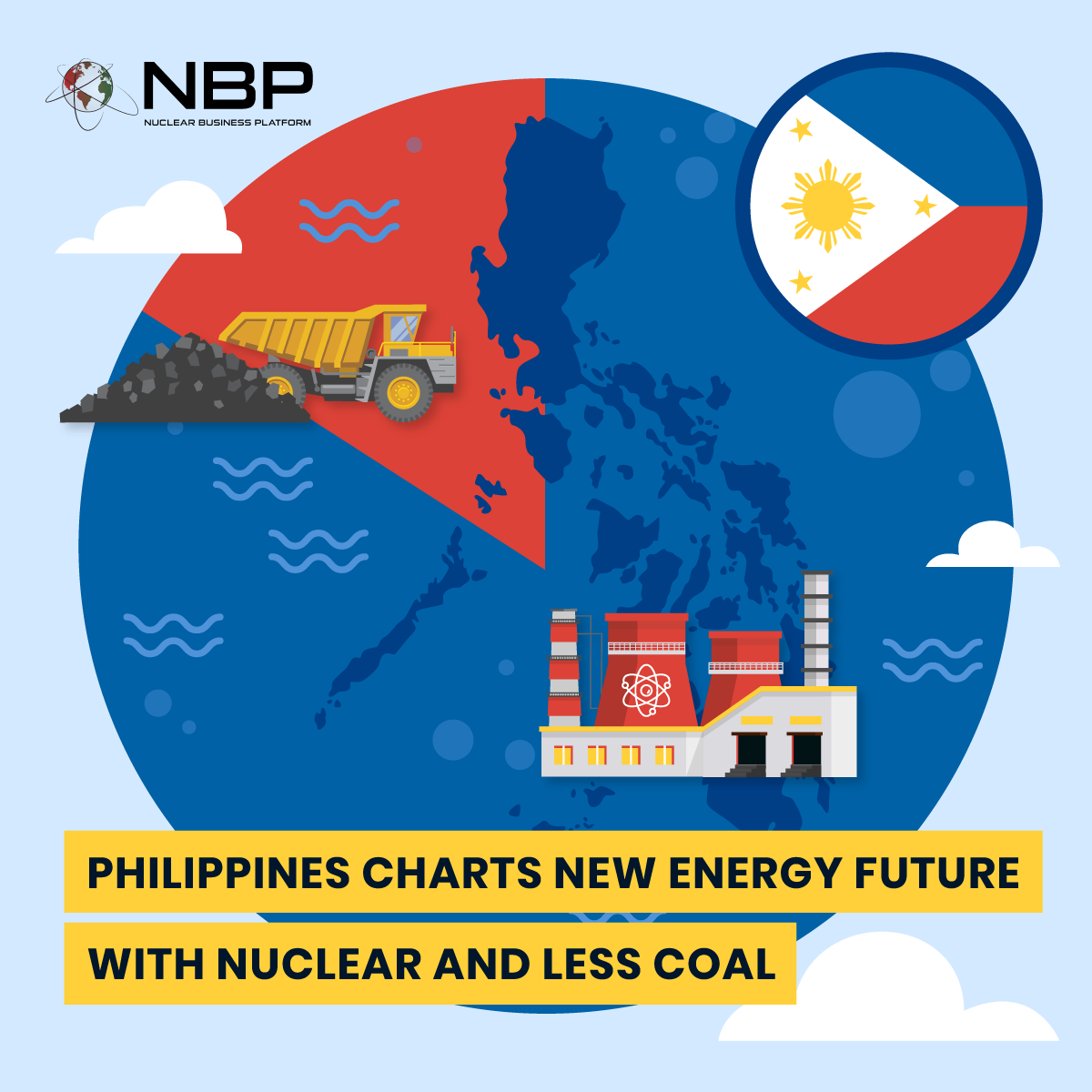Philippines Charts New Energy Future with Nuclear and Less Coal
The Philippines, under the leadership of President Marcos, is undergoing significant changes in its energy landscape due to rising energy demands, costly electricity, and heavy dependence on coal imports. Coal currently constitutes approximately 46% of the country's total installed power generation capacity, with specific figures indicating 8,607.7 MW in Luzon, 1,959.5 MW in Mindanao, and 1,412.5 MW in the Visayas. In response to these challenges, the Philippines is revising its energy roadmap, which extends up to 2050, to incorporate nuclear energy while simultaneously increasing its targets for renewable energy sources.
The revised energy roadmap, as outlined by the Department of Energy (DOE), introduces two distinct scenarios: the reference scenario and the clean energy scenario. The reference scenario builds upon existing renewable energy (RE) targets, while the clean energy scenario envisions a more diverse energy mix that includes nuclear energy, the transformation of coal facilities, and the retirement of some coal-powered plants. The DOE has already conducted the first public consultation of the Philippine Energy Plan (PEP) 2023 to 2050 to gather input and insights.
The clean energy scenario aims to significantly boost the proportion of renewable energy in the energy generation mix, targeting 35% by 2030, 50% by 2040, and more than 50% by 2050. It also includes two options for offshore wind energy development, with one offering a capacity of 19 gigawatts (GW) by 2050 and the other a higher capacity of 50 GW by the same year. Additionally, the plan is to establish eight 150 MW small modular reactors (SMR) by 2032, with an additional 1,200 MW of nuclear capacity by 2035 and 4,800 MW by 2050.
Key Ingredients for a Successful Nuclear Energy Program
The shift in the Philippines' energy strategy reflects a broader global trend towards cleaner and more sustainable energy sources, as well as a recognition of the imperative to reduce dependence on coal while addressing the growing energy demands. It is crucial to emphasize that the successful execution of these plans hinges on meticulous planning, robust infrastructure development, and the establishment of effective regulatory frameworks to ensure the safe and efficient integration of nuclear and renewable energy sources into the country's energy mix. Moreover, the role of public support and environmental considerations cannot be underestimated, as they will significantly influence the outcome of these energy transition efforts.
In our last interview with Inna Pletukhina who is from the Energy and Infrastructure team at Hunton Andrews Kurth, she highlighted several key considerations for countries embarking on new nuclear energy programs:
Establish Robust Nuclear Laws and Regulations Early: Prioritize the development of comprehensive nuclear laws and regulations from the outset. This not only provides a solid legal framework but also instils confidence in potential investors.
Invest in Human Capital and Talent: Building a pool of skilled professionals with STEM (Science, Technology, Engineering, and Mathematics) expertise is important. Developing technical proficiency takes time, so initiating this process early is essential.
Choose Technology and Vendor Partners Wisely: Select technology and vendor partners that align with your long-term goals and with whom you can maintain a productive partnership over decades.
Learn from Others' Experiences: Study the experiences of other countries, both their successes and failures, in developing nuclear programs and projects. There is a wealth of knowledge to draw from in the global nuclear community.
Collaborate Globally: Don't attempt to navigate the complexities of nuclear energy development alone. Tap into the knowledge and experience of the global nuclear community to benefit from collective wisdom.
Define Clear Vision and Goals: Establish a well-defined vision and goals for your nuclear program that are closely tied to national objectives. This clarity will serve as a guiding framework and help align stakeholders.
Tailor Regulatory Approaches: While adapting regulatory approaches to specific needs is essential, always prioritize safety, security, and non-proliferation considerations.
By adhering to these principles, countries can embark on a path towards successful and sustainable nuclear energy programs, contributing to their energy security and environmental goals.



